After travelling the world and meeting people, some of the biggest misconceptions and questions I got asked, were about travelling to Eastern Europe.
We may earn affiliate commissions from websites we link to, at no cost to you. Click here for details.
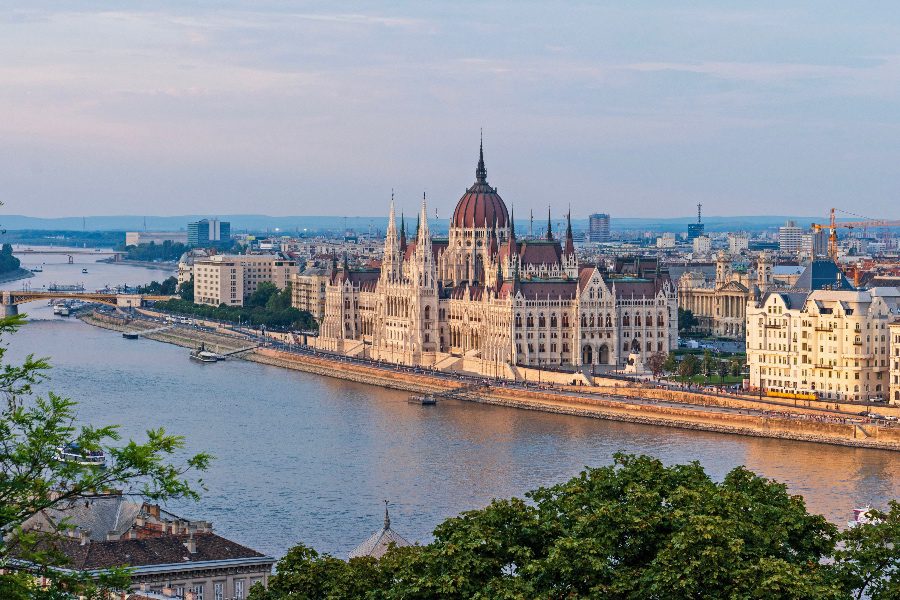
I was born in Slovakia, I lived in four countries across Europe and spent years working as a tour guide for groups of international visitors across Europe. But the questions seem always to be the same.
Even now, in 2024 I am surprised by just how many misconceptions about Eastern Europe there are. So let’s change this!
It’s time to debunk some myths about Eastern Europe so that if you are travelling to Eastern Europe, you don’t have to worry!
Many of these assumptions are untrue.
Before we start, we need to define Eastern Europe.
Table of Contents
What is Eastern Europe?
How are Eastern Europe and Central Europe different?
Well, we could start an entire article on this. But let’s keep it simple.
In a broader sense, the definition of Eastern Europe is more political than geographical. lt includes the countries that embraced or were forced to adopt communism. See the map below:
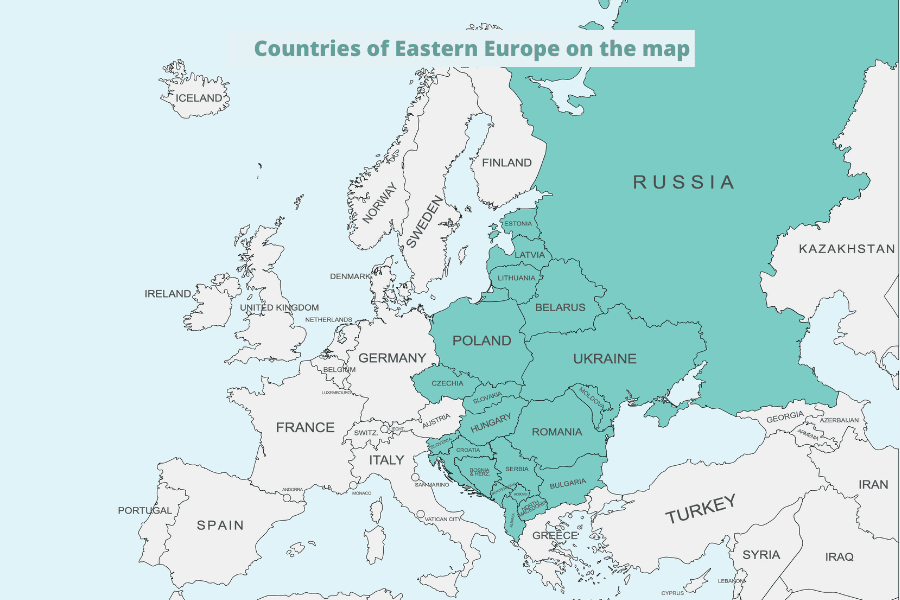
These are the countries in Eastern Europe when listed by specific region:
- Central Europe: The Czech Republic, Slovakia, Poland, Hungary,
- Eastern Europe: Ukraine, Belarus, Bulgaria, Romania, Moldova and the European part of Russia.
- The 3 Baltic states: Latvia, Lithuania, Estonia
- The Balkans: Slovenia, Croatia, Bosnia & Herzegovina, Serbia, Macedonia, Kosovo and Albania
Confused about Baltic and Balkans Countries? Find out here how they are different.
You can see these 4 individual regions below. If you are travelling to Eastern Europe, this can give you a better idea of why some countries are more similar. However, for this article to focus on misconceptions about Eastern Europe, we are including all of the wider Eastern Europe.
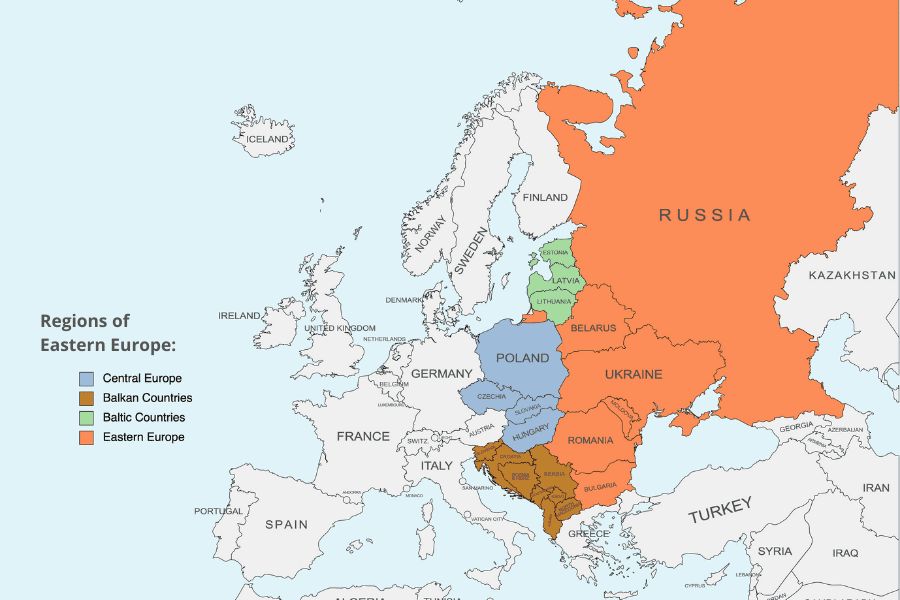
HOT TIP: When travelling to Eastern Europe refer to each region with its specific name. If you are in the Czech Republic, say Central Europe, if you are in Estonia say Baltics (or even Northern Europe) and when in Montenegro, say Balkans.
Also, not all countries in Eastern Europe were part of the Soviet Union! More about this, later on. But it’s one way to instantly offend people if you get this wrong.
Ok now that we got that covered, let’s get to the 7 questions about Eastern Europe that really highlight the biggest misconceptions about Eastern Europe.
1. Do they speak Russian in Eastern Europe?
This is probably the most common question I get.
“Do you speak Russian in *insert any Eastern European County*?”
In many ways, people in Eastern Europe find it offensive. Why? This question is almost always asked because of the lack of knowledge that all Eastern European countries have their own individual languages. Just imagine travelling across Western Europe and asking people in the Netherlands, Belgium or Sweden if they all speak German.
Of the 19 countries in Eastern Europe, only 1 country (well apart from Russia obviously) has Russian as an official language. The country is Belarus which has two official languages: Belarus and Russian.
Do people in Eastern Europe speak Russian as a second language?
Sure they do, but you will find that English is more widely spoken as a second language for anyone between the ages of 18 – 40 and German was taught for the generation aged now 40-60. For some, Russian was also taught as a second language, especially in the countries that were part of the Soviet Union.
One of the misconceptions about Eastern Europe is also that people are not bilingual. But further studies and statistics show, that in fact, most people are at least bilingual, many speak 3 to 4 languages (it might just not be English).
Travelling in Eastern Europe might mean you will be lost in translation at some point. But this happens even in Western Europe too – unless you are in the Netherlands or Scandinavia. LOL. They all speak English so well.
From a personal perspective, my mum speaks 5 languages and she always gets worried that her English is not good enough when we are outside of Slovakia. I have to remind her, that the majority of English speakers often only speak English and she should never feel embarrassed that her 5th language is not as good as her first 4. So whenever you come across someone who can’t speak English, remember they might have learnt another 2-3 other languages.
Here is the list of official languages in Eastern Europe (apart from Russia):
Albania – Albanian
Bosnia and Herzegovina – Bosnian, Croatian and Serbian
Bulgaria – Bulgarian
Croatia – Croatian
Czech Republic – Czech
Estonia – Estonian
Hungary – Hungarian
Kosovo – Albanian and Serbian
Lithuania – Lithuanian
Moldava – Romanian
Montenegro – Montenegrin
North Macedonia – Macedonian and Albanian
Poland – Polish
Romania – Romanian
Serbia – Serbian
Slovakia – Slovak
Slovenia – Slovenian
Ukraine – Ukrainian
Learn more about Ukrainian vs the Russian Language – A Simple Explanation of these 2 languages.
2. Is Eastern Europe safe?
It seems like all the blockbuster movies feature some gangs from Eastern Europe. Albanian mafia, Serbian gun traffickers or just guys speaking Polish. LOL. The truth is, Eastern Europe is much safer than everyone else thinks (including the people from Eastern Europe). When you compare the top 10 countries’ Crime Index here, you’ll find 6 countries in the top 10 are from Western Europe and only 4 countries from Eastern Europe.
Now don’t get me wrong, things do happen across Europe, but I don’t really think you need some advanced strategy to survive Eastern Europe. No Bear Grylls training is required. Relax.
Eastern Europe is safe. Your biggest danger or threat is probably having too many beers and falling for one of the tourist scams. And when it comes to pickpocketing, I don’t think Eastern Europe can compete with pickpocketers in Barcelona or Rome – they are professional pickpocketers with real talent.
Oh and if you meet a really pretty girl in Budapest that is way out of your league and she wants you to go for a drink, well the drinks might end up costing you $500. And expect to see two large men appear out of nowhere to ensure you pay up.
But I admit it. Some parts of old towering concrete blocks in the capital cities that were left behind, coupled with graffiti and a few decades of no intention to redevelop them can create the feeling of “dodgy places”. But dodgy doesn’t mean unsafe and you probably turn a corner only to find a new hipster cafe.
- 🔥 Hot Tip: Book accommodation in advance on Booking.com
- 🎟 Book your attractions and tickets online: We recommend Viator and GetYourGuide
- 🔋 Stay charged: This Belkin Power Bank is essential!
- 📸 Join a Group Tour: Find some amazing Group Tours here
- ✅ Get Connected with an eSIM: Fast, easy and affordable! View easy eSIM options here
Also, most cities offer two tales. Look here. The city of Warsaw in Poland. One of the misconceptions about Eastern Europe is that it is all just communist buildings.
Well, the photo below shows The Palace of the Culture in Warsaw on the left, but the photo on the right shows the Old Town in Warsaw.
You can see how different these two photos give you different vibes. Trust me, travelling to Eastern Europe involves a lot more medieval/old towns than communist buildings.
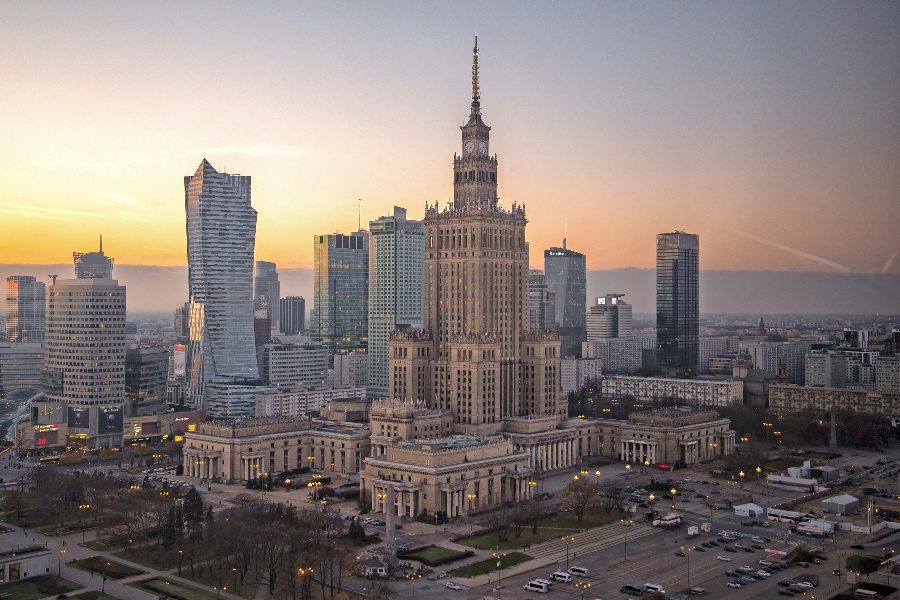
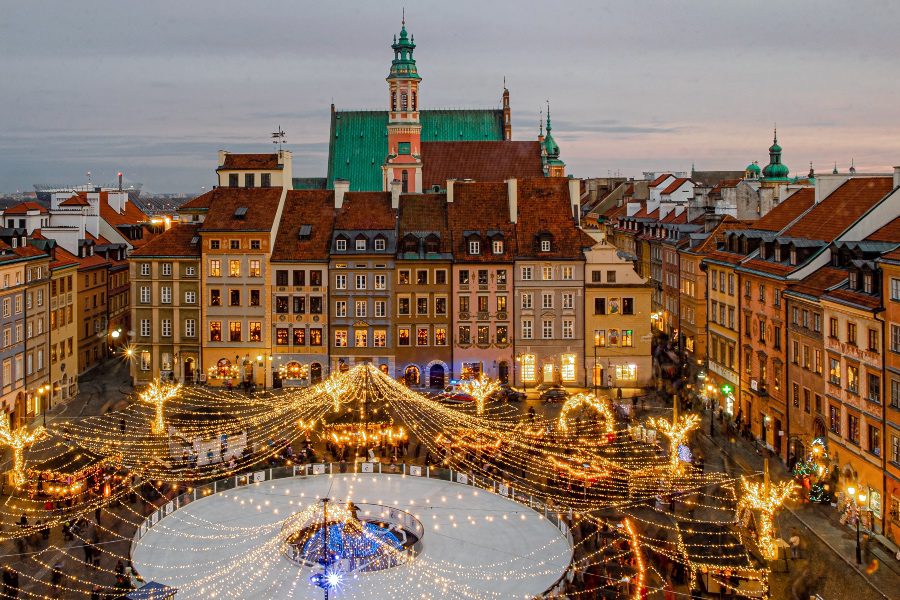
3. But is there anything to see in Eastern Europe?
This seems to be another misconception about Eastern Europe. That there is nothing really for tourists to do or see.
Well apart from Prague. This was the first city that tourists discovered and they were blown away. “Have you been to Prague? Isn’t it beautiful?” they would ask and I would nod.
Then everyone discovered Croatia and Dubrovnik when travelling to Europe on their next trip. Again, I would hear how this is the best-kept secret in Europe. My grandparents have been going to the coast of today’s Croatia (back then part of Yugoslavia) since the ’50s. Then the same happened to Ljubljana, particularly the capital city of Slovenia. “Wow, isn’t it lovely!”, they would say.
Well exactly, the word LOVE is in the name *wink*. And then everyone found Budapest and it was the next new big thing!
So absolutely, there is a LOT to see. The best part? You can still go and see places that have not yet become the NEXT BIG THING.
Wieliczka Salt Mine near Krakow Poland is as deep as the Eiffel Tower! Really something special. You won’t find thermal baths like those in Budapest, Hungary in Western Europe.
Did you know Moldova makes amazing wine? Why not visit a winery? This City Tour of Chisinau (the capital) includes a visit to a winery.
10 Cheapest Countries in Europe to Visit in 2022; The Ultimate Guide!
Get Connected with eSIM

Get connected easily on your travels—buy an eSIM! An eSIM works like an app: buy it, download it, and get connected in minutes! It’s easy, affordable, and convenient. Keep your original phone number, too!
Click below and view which eSIM data plan you need for your next adventure. Use our referral code: RACHEL5045, to get $3 off your first purchase!
Did you know Latvia has some incredible art-nouveau architecture in their capital Riga and you can go to the beach as well? Lake Ohrid in Macedonia is another place we don’t want people to know because it’s so cool and beautiful.
If you love fairytales, why not visit one of the many castles in Slovakia? The Spis Castle in Slovakia is the largest castle in Europe.
This private two-day tour of Slovakia is highly recommended if you’re short on time. And if you are getting Slovakia and Slovenia still confused, then you must read this article Slovakia vs Slovenia: What is the difference?
And if you are after some Medittearean coastal vibes, wait until you see Kotor in Montenegro and the lesser-known islands in Croatia.
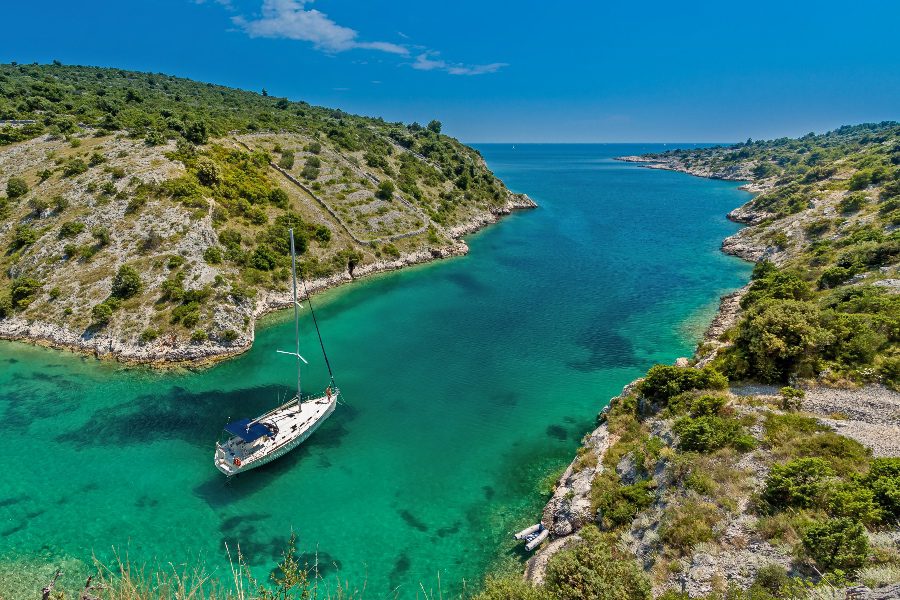
4. Is there any art or culture in Eastern Europe?
Yes. Plenty of it. From vibrant festivals such as Pohoda Festival In Slovakia, Exit Festival in Serbia, Sziget in Hungary and many more!
There are many art museums and galleries across Eastern Europe, some of my favourite museums of the Warsaw Uprising in Warsaw (the audio-guided tour is recommended) and Alfons Mucha Museum in Prague, Nikola Tesla Museum in Belgrade and don’t miss the Nedbalka Gallery in Bratislava.
And many towns and cities across Eastern Europe can be quite artsy and quirky – travelling in Eastern Europe is a joy for those looking for something unique. It’s not just all grey, one of the common misconceptions about Europe.
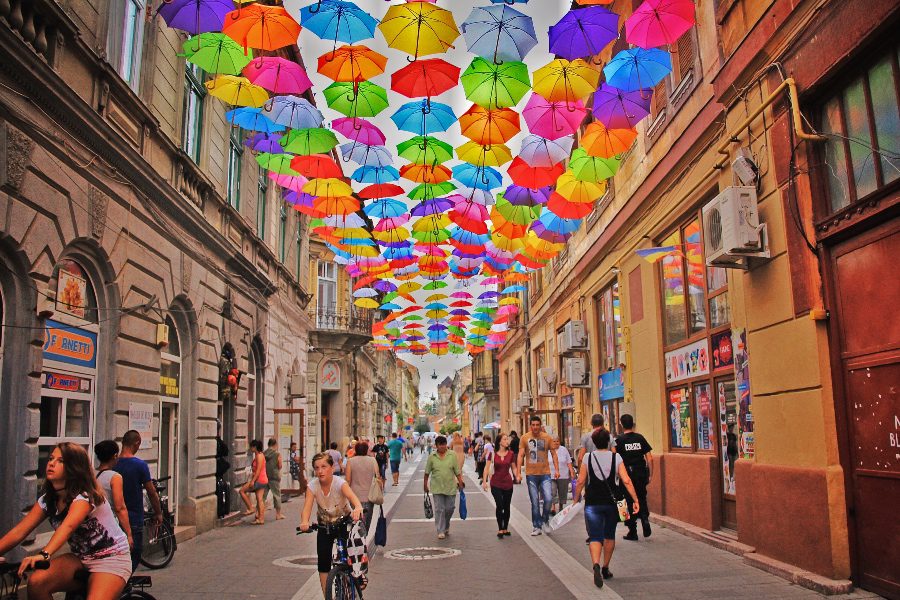
5. Another misconception: Eastern Europe is really cheap!
Well, if you compare France, the Netherlands or Switzerland to Eastern Europe in general, then yes it’s definitely cheaper. You will most likely pay less for transport and accommodation.
But with the increased wages (especially in Central Europe) you might end up paying a lot for food and coffee in cities such as Prague, Bratislava, Ljubljana or Dubrovnik.
I recently paid 3.70 euros in Bratislava (4 USD or 5.50AUD) and it was one of the most expensive coffees I’ve had in a while in Europe.
These days, I often find Italy, Greece or Portugal (Southern Europe) cheaper than some parts of Central Europe. But if you travel further east or into the Balkans, you will find that prices decrease. The countries in the Balkans tend to have cheaper prices as the average salary is lower than in Central or Western Europe and prices do reflect this.
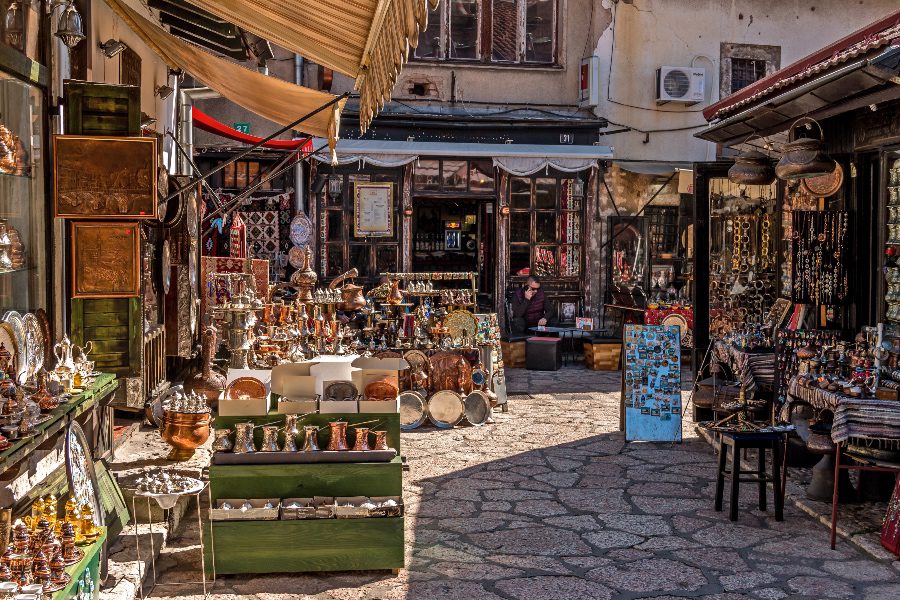
6. The food in Eastern Europe is all bland!
Right, if you imagine the food to be all based on potatoes and cabbage, you are not the only one. And while these two ingredients do feature in the cooking, there is so much more to it!
The majority of visitors don’t know very much about the food in this part of Europe. Unless you are Canadian/American, then you’ve probably had some Polish pierogi.
But the region has many unique dishes and with the booming food scene happening across Eastern Europe you can now taste dishes as good as my mum’s home cooking, but now available in the restaurant.
To get a better idea of dishes, check out our Ultimate Food Map of Europe for each dish you must try in every European country.
If you are heading to the Czech Republic, then here is the Best Czech food in Prague and the top 6 places to eat it and these 10 most popular Slovenian foods will make you fall in love with Slovenian cooking.
And if you are heading into the Balkan region, find out Where to eat in North Macedonia and the 8 delicious foods you need to try.
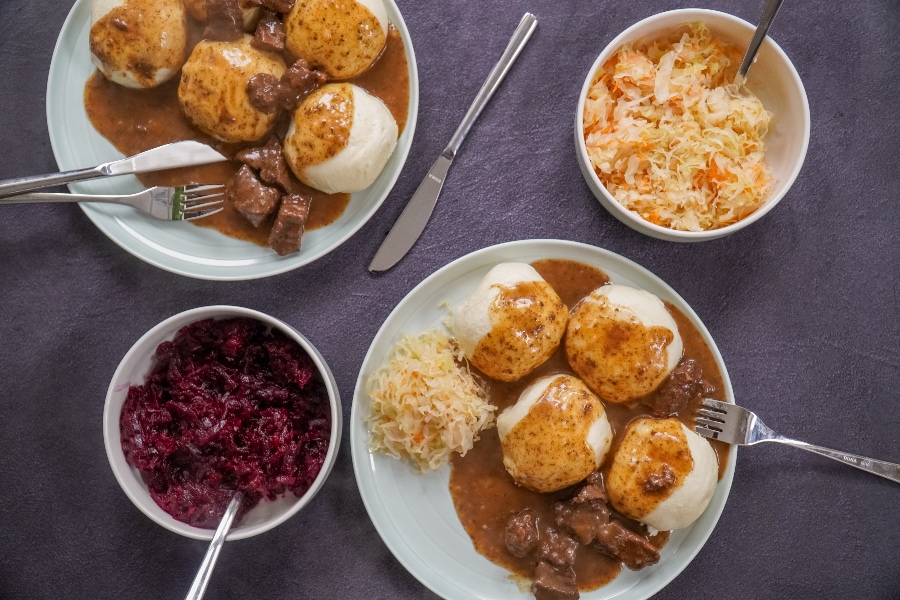

7. Eastern Europe was part of Russia/Soviet Union at some stage
I hear every European from Central Europe or Balkans sigh out loud when they hear this. This really stirs up many emotions as there is a lot of historical background as to why people find this hurtful. It also suggests that their national identity which was often fought so hard for isn’t very well known.
Here is why some countries feel so strongly about not being part of the Soviet Union! They have been either invaded or have taken a hard step to not be linked:
- In 1968 the Soviet Union invaded Czechoslovakia (today’s Czechia and Slovakia)
- In 1958 the Soviet Union invaded Hungary
- Yugoslavia was never part of the Soviet Union, in fact, it opposed it from 1948
Out of the 19 countries that are included in the Eastern Europe definition (in the wider sense) only these 7 countries were part of the Soviet Union: Russia, Estonia, Latvia, Lithuania, Belarus, Ukraine and Moldova.
This helpful map below shows the countries once part of the Soviet Union in red.
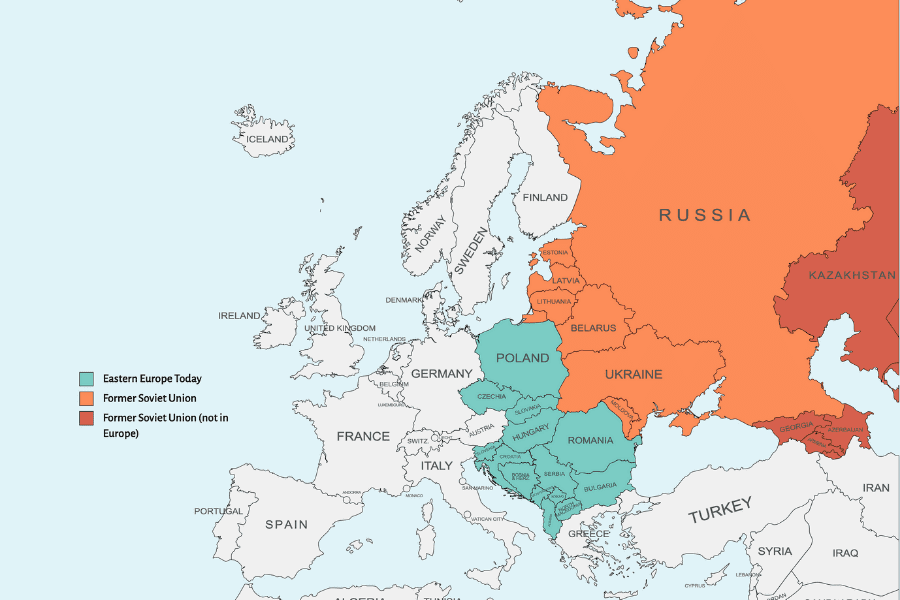
And that’s it! These are the 7 misconceptions about Eastern Europe I come across frequently. Did I forget any? Let me know in the comments.
There are a few other misconceptions regarding the social structure in Eastern Europe.
For example, in Slovakia, we have paid maternity leave from 34 weeks up to 2 years, 4 weeks of vacation, free healthcare and free education. And our retirees get free train travel. But many people in Eastern Europe feel like this is a default setup.
When I try to explain that my friends in the USA are in debt because of college tuition or medical bills and can’t travel as they only have 1-2 weeks of holiday, they almost don’t want to believe me.
And if you have any questions about travelling to Eastern Europe, feel free to ask.
Travel Planning Resources
✈️ Flights: We use Skyscanner to book cheap flights worldwide.
🏨 Accommodation: Booking.com is our preferred platform for booking hotels and accommodation.
🏥 Travel Insurance: We recommend Heymondo (Get 5% off Heymondo) & SafetyWing
🚌 Transportation: Trainline is the best website to reserve trains. We use Omio to book transport worldwide. For travel in Asia, we use 12Go.
🚘 Car Rental: We use DiscoverCars to book rental cars worldwide.
👫 Group Tours: G Adventures OR compare multi-day tours worldwide with Tourradar.
📸 Day Tours & Trips: GetYourGuide & Viator are the only two platforms you need.
📚 Lonely Planet: The Best Range of Travel Guides & Ebooks, and FREE Shipping! (use code RACHELDAVEY10 for a 10% discount)
🎒 Luggage: Osprey Farpoint 40L Backpack or Samsonite Luggage Range.
🛄 What to Pack: Don’t forget your Universal charger and a good power bank. To help you pack the essentials, here is our ULTIMATE Packing List for all Travellers.
🐶 Become a House Sitter: Join Trusted Housesitters and enjoy FREE accommodation worldwide. Use our invite to receive 25% off your new membership.
💰 Send Money Anywhere: WISE & Revolut are the best online accounts that let you send money, get paid, and spend money internationally. Both are so easy to use and way cheaper than any bank transfer.
📶 Stay Connected: Airalo eSIM allows you to get connected the moment you land at your destination, and you can avoid those expensive data roaming charges. We LOVE this product! Use promo code NOMAD15 for 15% off ALL eSIMs (new Airalo users only) OR use NOMAD10 for 10% off ALL eSIMs (for existing Airalo users)
✅ Check out our Travel Gear and Travel Resources for more valuable tips to save you money!











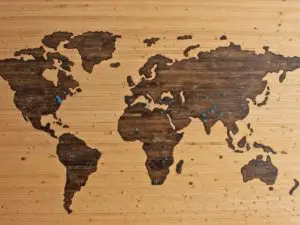
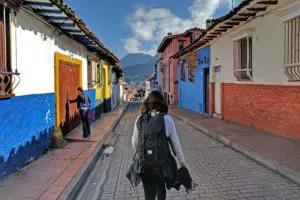


1 Comment. Leave new
Correct and useful information. I appreciate that you mentioned Romanian as the language spoken in Rep. of Moldova. Some people think that there is a Moldavian language.